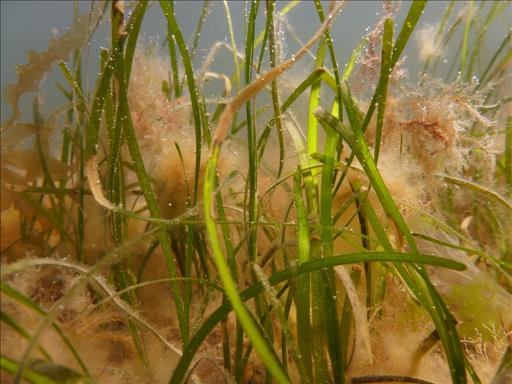
How underwater gardening can rewild the Atlantic Ocean
The history of Atlantic Ocean exploitation is in no small part due to its immense productivity. Legend has it that stocks of Atlantic cod were once so plentiful that fishermen proclaimed they could walk across the ocean on the backs of fish.
By 1913, . At the same time 700m European flat oysters were being consumed annually in just London. Since then, landings have been in steady decline. Catch is now at around 0.4m tonnes and the number of employed fishermen has fallen from 50,000 in 1938 to 12,000 in 2015.
The Atlantic Ocean of 2017 is a shadow of its former self. The once productive fishery resources were supported by rich, biodiverse and expansive habitats such seagrass meadows and kelp forests, but study after study has shown that these habitats have and poor water quality, destructive fishing practices and coastal developments.
Now the Atlantic is facing fresh challenges, this time from the growth of . But there is a potential solution: ocean rewilding.
Finding green shootsOcean rewilding is 'the of ecosystems where nature can take care of itself'. The concept encourages a balance between people and the rest of nature where each can thrive.
Terrestrial restoration of ecosystems such as woodlands, rivers and marsh lands are commonplace. And commercial companies are even providing ' solutions for some of this. The reintroductions of species such as the , and have been a success, but to date comparable rewilding of our oceans has only been minimal. With the major loss of seagrass and oyster , there is now growing interest and opportunities for this kind of restoration to occur underwater too.
Researchers across the globe have pioneered the restoration of the marine environment, and our . Large scale restoration successes in places such as Chesapeake Bay – an estuary off the coast of Virginia, US – have transformed the marine environment. Restored seagrass meadows have been proven to provide important , and at the same time are beginning to sequester large amounts of .
Many Atlantic cod stocks are now exploited at , and regulation across Europe is resulting in . This is leading to the belief that major steps can be made to reverse degradation that has taken place in this ocean too.
Renewables and conservation Seagrass seeds can be collected by divers as one might pick blackberries on land. credit, Author providedOur team has been underwater gardening to help improve methods for marine habitat restoration. This underwater rewilding work commenced in 2014 with initial laboratory trials but has now expanded into the sea. It's not just about planting pretty flowers, or creative rockeries, like one might do outside their home, these projects are attempting to utilise the opportunities of offshore and coastal renewable energy. Tidal lagoons, for example, are being proposed around the world as a potential option for reliable and predictable power generation. But these large sheltered lagoons can also be a major opportunity for environmental renewal.
We have been working with a company, , to examine methods for creating new seagrass habitats in these lagoons. This includes growing seedlings in labs and planting them, deploying lines of seed bags, and transplanting plants from donor sites. Just like terrestrial gardening this is done using trowels and all the paraphernalia from a garden shed – albeit underwater.
Seagrass shoots protected from disturbance using biodegradable plastic frames. PR Unsworth, Author providedAnd working with we've been taking part in a major test to utilise biodegradable to help support these transplanted seagrass. The use of these biodegradable materials is vital given the in our oceans and the risk of inadvertently polluting the ocean with parts of our experiments.
With further research we hope to take trials of underwater gardening in tidal lagoons and turn them into actual habitat creation and ultimately bolster the rewilding of our oceans. As and develop, these need to be seen not in terms of the conflict with the productivity of our oceans but as an opportunity to enhance it.

Legal Disclaimer:
MENAFN provides the
information “as is” without warranty of any kind. We do not accept
any responsibility or liability for the accuracy, content, images,
videos, licenses, completeness, legality, or reliability of the information
contained in this article. If you have any complaints or copyright
issues related to this article, kindly contact the provider above.


















Comments
No comment